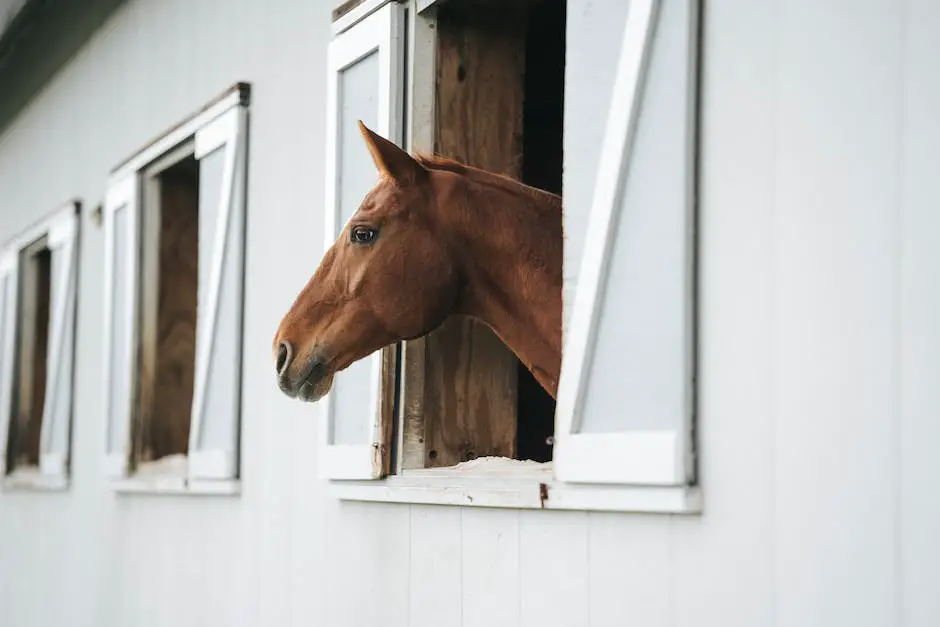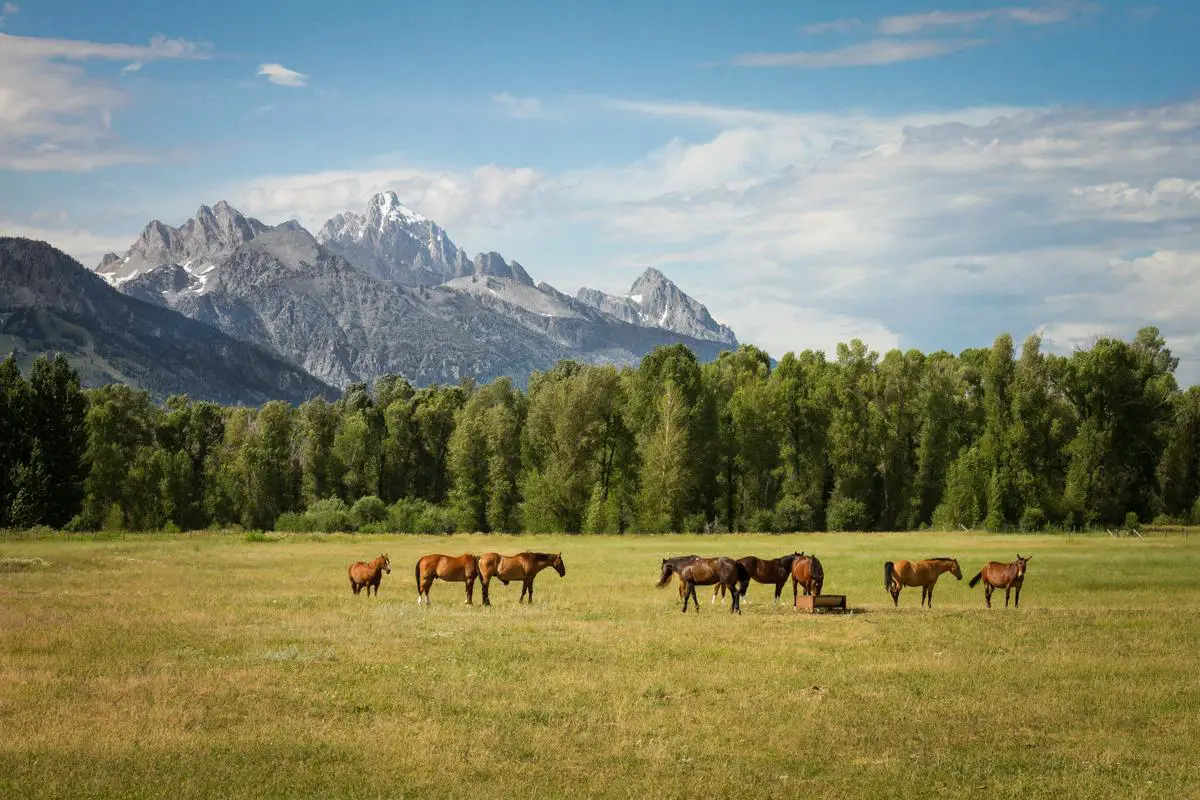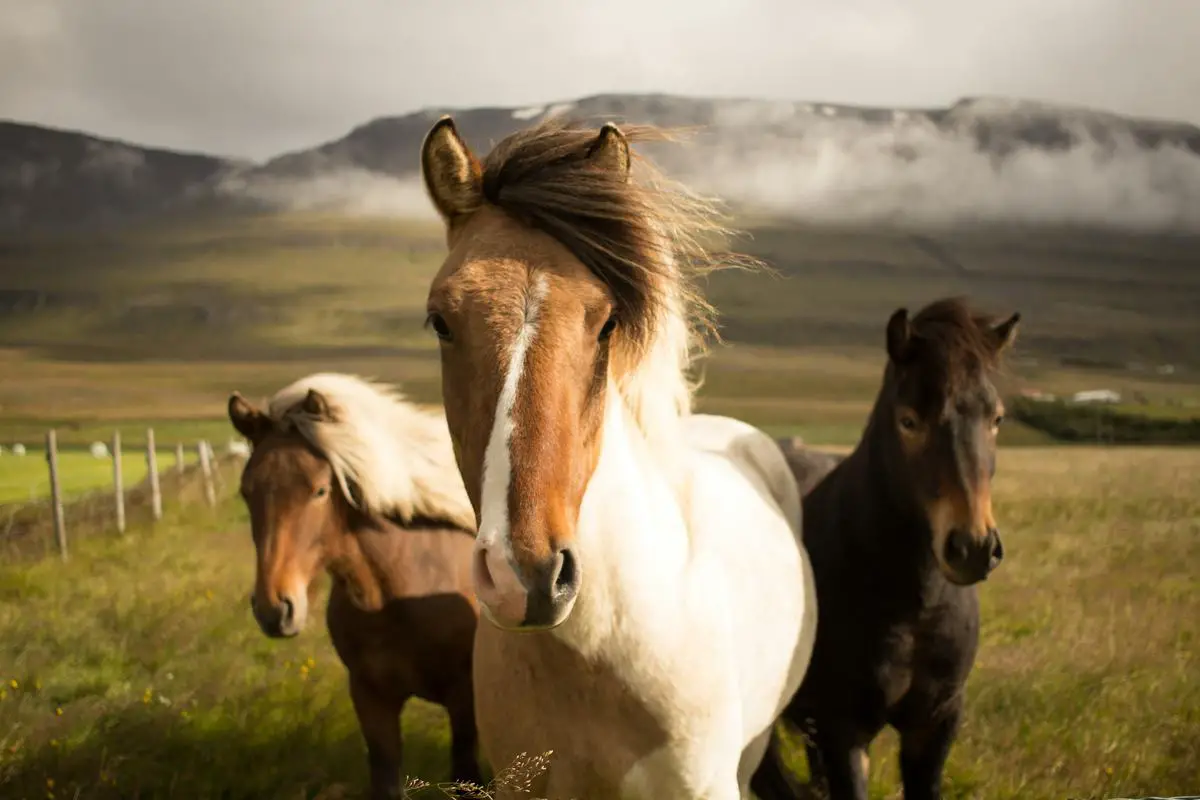Deftly galloping through the plains of equine terminology, one may stumble upon the terms ‘warm blooded’ and ‘cold blooded’ horses, often leading to baffling misconceptions. These terms, contrary to common perception, do not refer to the physiological temperature of horse breeds but lay the groundwork for distinguishing their respective temperaments and breed characteristics. With a fascinating history and origin underpinning these terms, enriching your knowledge regarding their application to horse breeds can add depth to your understanding and passion for these majestic creatures. This exploration begins by dissecting the characteristics of warm blooded breeds, highlighting their physical attributes, temperament, and typical roles they undertake. Then we journey through the realm of cold blooded breeds, known for their gentle demeanor and sturdy stature, visible prominently in draft horses.
Table of Contents (Horspedia)
Understanding the Terminology
Title: The Intriguing World of Warmblood and Coldblood Horses
Let’s embark on a fascinating journey into the world of equestrian knowledge – a world full of diversity and surprises, especially when it comes to different types of horses. Today’s topic? Defining and differentiating between warmblooded and coldblooded horses. It’s a prevalent question that often pops up in equestrian circles. Despite sounding like a point from a biology textbook, these terminologies aren’t about the actual temperature of the horse’s blood.
First off, coldblooded doesn’t refer to a chilly horse on a winter day. In equestrian parlance, coldblooded horses are generally draft horses – the big fellows who are typically robust, patient and ideally suited for laborious tasks. Known for their calm and gentle demeanors, they’re the old-timey workhorses pulling plows, wagons, and even sleds packed with logs. Examples of coldblooded breeds include the majestic Clydesdales, sturdy Shires, and steadfast Belgians. Visually, they’re impressive, standing out with their sturdy bodies, powerful muscles, and prominent feathering around lower legs.
On the other hand, warmblooded horses don’t have high body temperatures. Instead, the term refers to horse breeds that are a mix between coldblooded and hot blooded horses. What’s a hot blooded horse, you ask? These are the breeds known for their speed, endurance, and spirited personalities, like the swift Arabian or the elegant Thoroughbred.
Warmblooded horses then draw upon the best traits of both groups, boasting the athleticism and vigor of hot-blooded breeds with the steadiness and patience of coldblooded ones. These horses are usually bred for discipline-specific performance like dressage, jumping, and eventing. Here you’ll find breeds like the versatile Dutch Warmblood, the elegant Hanoverian, or the nimble Oldenburg.
When it comes to their personalities, warmblooded horses tend to show a balance between energy and tranquillity, making them suitable for a diverse range of equestrian pursuits. Moreover, their physical characteristics vary, but they usually exhibit a body structure that suits athletic pursuits, with a combination of power and suppleness.
In the world of horses, “warmblooded” or “coldblooded” don’t reflect body temperature or emotional status. They are simply useful classifications that help depict the size, use, temperament, and origins of different horse breeds. It’s fascinating, isn’t it – how much more there is to learn about our four-legged friends? So, next time you see these majestic creatures, remember – it’s not about the warmth or coolness of their blood, but the origin of their lines and the qualities they possess that categorizes them!

Characteristics of Warm Blooded Breeds
Diving deeper into the world of warm-blooded horse breeds, not only their general characteristics and uses are noteworthy, but also certain distinctive traits that set them apart from their cold-blooded and hot-blooded counterparts. Remember, variety is the spice of life, and it is this diversity that makes equestrian activities so captivating.
Just like humans, each individual horse has their unique personality traits; however, there are common trends within warm-blooded breeds that signify their classification. They are often described as being “in the middle” – bursting with spirit and energy, yet balanced with a calm, steady demeanor. These breeds are a blend of the athletic agility found in hot-blooded horses and the strength and endurance of cold-blooded types.
Versatility is one classic trait of warm-blooded breeds, making them ideal for multiple equestrian activities. They can easily adapt to show jumping, dressage, hunting, or even trail riding. They are quick learners, keen to please, and can adjust to a variety of environments and tasks, partially due to their mixed heritage.
Their smooth, rhythmic gait, coupled with a balanced body structure, makes for a comfortable ride. Though not as flashy as some hot-blooded breeds, the warm-blood breeds have an effortless grace in their movements, often described as “floating on air” by their riders.
It’s crucial to note the variability in height and weight within the warm-blood groups. While they typically range in size, they are generally smaller and lighter than the majestic cold-blooded workhorses, yet larger and bulkier than the slender hot-blooded racehorses.
Warm-blooded breeds also showcase a stunning selection of coat colors and markings. From deep bay to shining chestnut, glossy black to regal gray, no two warm-bloods are strictly alike, each radiating an unique charm and elegance.
It would be remiss not to mention their robust health and longevity. Warm-blooded horses are infamously tough, a trait passed down from their cold-blooded ancestors. They routinely live into their late twenties or early thirties, with proper care, making them a long-term companion for their loving owners.
While it’s easy to get lost in the world of horse breeds, remembering these key points can help. Warm-bloods hover between the spirited athleticism of hot-bloods and the rock-solid endurance of cold-bloods. They are versatile, adaptable, and charming in their individual manners. With a broad range of sizes, stunning coat colors, and long-lived health, choosing a warm-blooded horse guarantees a loyal, capable companion that can dip its hoofs in many equestrian activities. So saddle up and get ready for an exquisite equestrian journey with warm-blooded horse breeds!

Characteristics of Cold Blooded Breeds
Now let’s delve into the unique traits of coldblooded horses that set them apart. Unlike their warmblooded counterparts, these horses carry a distinct charm and are more mellow in temperament. With an unmistakable calmness, coldblooded breeds are often considered the gentle giants of the equine world.
One unique aspect is their remarkable strength. Originally bred as workhorses, they have the capability to pull large weights, a trait passed down from their ancestors who hauled plows and carts. Their powerful, muscled bodies, larger bone structure, and burly legs are iconic, contributing to this incredible strength.
Their hardiness is another critical trait. With rugged sturdiness and resilience, these breeds thrive in harsher climate conditions, making them attractive for demanding outdoor environments. Ideally, they are preferred for their durable stature, less prone to injury.
Don’t be fooled by their gargantuan size; these creatures exhibit an unyielding patience and steadiness. They often demonstrate a cool head in situations that might fluster a hot, or even some warm-blooded horses, making them reliable training and working partners.
Boasting a variety of coat colors typical of draft horses, from bay, black, grey, chestnut, to roan, cold blooded horses also exhibit a beautiful range of appearances. Their thick, wavy manes and tails are hard to miss, complementing their grand physique and giving an overall majestic appearance.
Did you know that these large breeds have fewer health issues compared to their counterparts? Coldblooded horses demonstrate a robust constitution, showcasing fewer congenital problems or conditions related to overbreeding. Famous for their longevity and slower physical maturation, they serve as trustworthy companions for years.
Despite their size, they are known for their gentle demeanor. They are like the friendly giants you’d want to spend time with. Cold blooded horses are often less aggressive and less spooky, making them excellent for those newer to equestrian pursuits.
In conclusion, choosing a coldblooded horse breed boils down to what you value in your equine partner. If endurance, strength, stability, and a calm disposition are on your list, these gentle giants might just be the perfect match. In the world of equines, they prove to be the epitome of ‘steady wins the race’, patiently and reliably serving their human partners with an enduring character.

The Gray Area: Warm vs Cold Blooded
In the equestrian world, the labyrinth of horse breeds and their classifications can be a doozy even to a regular horse enthusiast. Knowledge of these classifications is key as they form a guide to understanding the differences – and yes, overlaps – in the physical traits, adaptability and purpose of each horse breed. Going beyond categorizing them as either warmblooded, coldblooded or hotblooded enables us to appreciate their unique characteristics.
But are there squiggly lines in these classifications? Sure thing! In fact, things can get interesting when it comes to certain types like the warmblooded Gelderlander or the Norwegian Fjord, typically a coldblooded horse, yet showing warmblooded characteristics. It’s fascinating to see how, in some rare instances, draft horses have been successfully crossed with lighter breeds resulting in stocks that defy common classifications.
Moreover, there’s the case of the versatile Irish Draught horse, often classified as a warmblood but displaying traits typical of coldblooded breeds. This breed showcases the confounding beauty of classification overlap, a sturdy frame coupled with a spirited demeanor. This mix of physical strength, unmatched agility and fiery spirit, often seen in horses within the warmblood cluster, makes these horses a top choice of many equestrians.
Another case of kinds overlapping is the Lipizzan Breed, technically warmblooded, revered for their grace and agility, yet, they bring to the fore, the power and strength commonly associated with coldblooded equines. They stand as a testament to the fact that despite general classifications, there’s more to horse breeds than just the ‘warm’ and ‘cold’ nomenclature.
Choosing the right horse breed depends largely on their temperament and purpose of use – from the grandeur of show jumping to the simplicity of family companionship. But remember, as interesting as these exceptions and overlaps are – there’s no hard and fast rule. The Thoroughbred, the Arabian and even the versatile Quarter Horse, all have their unique strengths and allure. Whether it’s for work, sport or just companionship, the horse world is rich in its variety, with every breed ready to gallop straight into your heart.
In conclusion, the apparently clear line of demarcation between warm and cold blooded horses is indeed, often blurred. The horse world is awash with bountiful breeds and types, each with their special traits and quirks, challenging and defying the simplicity of categorisation. It’s a fantastic glimpse into the rich diversity of equine wonder. Always, always, remember that no matter what your goal is, there’s a horse that fits the bill – and that could belong to any kind. Happy riding, folks!
While readers continue to absorb the exciting maze of horse breeds, it is clear that these classifications are no more than guiding light, helping us appreciate the subtle beauty in the fine art of horse breeding. However, in the grand scheme of things, what’s really important is your connection with the horse, because, at the end of the day, every horse is a wonder in its own right.

Photo by hollymandarich on Unsplash
Choosing the Right Breed
As we progress further into the exploration of different horse breeds and their classifications, it’s worth noting the factors that should be considered before choosing between warmblooded and coldblooded horses.
While these classifications provide a rough overview of expected traits, the individual horse’s training, care, and genetics also play a crucial role. Thus, clearly defined purposes and personal preferences should significantly influence the choice of equine companion.
Truly, the decision should reflect the type of equestrian activities that interest you. For instance, if you’re drawn to show jumping, dressage, eventing, or hunting, warmblooded mounts might pique your interest. As explained earlier, these breeds exhibit a mix of agility, speed, and strength, cultivated from generations of selective breeding.
On the other hand, if you’re more keen on the heavy-duty type of work like farming, logging or ploughing fields, then coldblooded horses can be a preferable option. Their unrivaled strength, sturdiness, and cool temper make them ideal for such tasks.
Besides activity preferences, consider your skill level. If you’re a novice rider, coldblooded breeds that showcase patience and a calm disposition could offer a safer and more comfortable ride. Yet, for more experienced riders seeking challenges and thrill, the spirited and agile nature of warmblooded horses might be more appealing.
Also, remember that the choice of horse breed will inevitably influence the care and maintenance required. Warmblooded horses, for instance, might need more exercise and mental stimulation than their coldblooded counterparts. While they are generally healthy, they could potentially develop health issues related to high-energy activity and stress. On the other hand, hardy coldblooded horses are known for their resilience to harsh climates and fewer health issues, reducing the potential vet costs.
Lastly, don’t overlook personal preference: while analytical thinking is essential, the horse-human bond should be a bond of love and respect. After all, personality matches can vastly improve the experience and satisfaction derived from this age-old partnership.
In conclusion, there’s a wide array of horse breeds, each with its unique charm, prowess, and quirks. Irrespective of the warmblooded and coldblooded classification, the best horse breed for anyone will always boil down to personal needs, preferences, and equestrian goals. Regardless of the breed, the astoundingly diverse and rich equestrian world will surely have the ideal horse for every aspiring horse enthusiast or seasoned rider out there.

Choosing the ideal horse breed mirrors a saga of balancing needs, tasks, and compatibility whilst juggling elements of care requirements and handler’s experience. Whether it’s the agile and spirited warm-blooded breed or the robust and gentle cold-blooded one, your choice should be a symbiotic match, resonating with both, your horse’s natural capabilities and your expectations. A warm-blooded horse may beautifully grace a show jumping course whilst a cold-blooded draft horse may excel robustly in farm work. Ultimately, understanding the difference between warm-blooded and cold-blooded horses and recognizing the unique traits they bring to the paddock can aid in carving an enriching equestrian journey. Appreciate their unique characteristics, harmonize with their natural inclinations, and tread the fulfilling path of understanding and embracing these stunning creatures.

